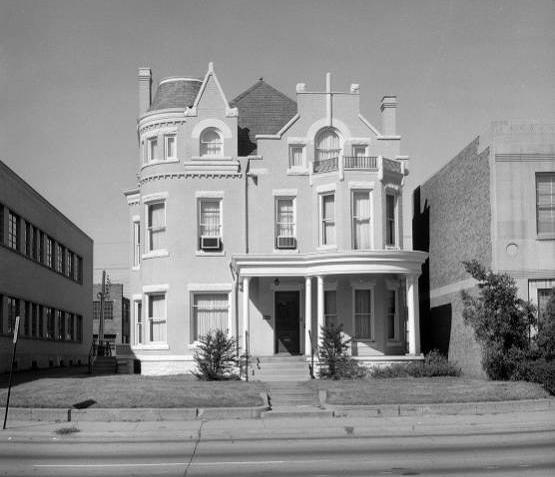White Protestant ministers, meeting monthly in their Indianapolis Ministerial Association at initiated an organizational meeting on June 7, 1912, for what became the Church Federation of Indianapolis. It was one of the first dozen organizations of its kind in the United States. The Federation traced its origins to the Indianapolis Ministerial Association, which was formed to keep Indianapolis ministers aware of social and moral issues in the community. The two organizations worked shoulder to shoulder for many years.

For three decades the president of the Federation was a layman from one of the member churches. However, true organizational direction came from Protestant leaders.
Beginning in 1939, under the leadership of Dr. Howard J. Baumgartel, the Federation increased the number of churches that belonged from 59 to 149. The Federation was instrumental in forming the Indiana Council of Churches in January 1943, and the National Council of Churches of Christ in the U.S. in 1950.
In 1954 the organization underwent significant changes. Leadership shifted to Reverend Laurence T. Hosie, the organization’s name changed to the Church Federation of Greater Indianapolis (CFGI), and its offices moved to the .
For the next decade, the Federation increased its activities and membership in the surrounding Indianapolis area with chaplaincies, televangelism, and radio programming. When Reverend Robert S. Koenig succeeded in leadership in 1966 the Roman Catholic Archdiocese was invited to join the Federation and outreach programs for the city’s poor and minority population took shape. Notably, an ecumenical program provided low-income housing for those in need.
The inclusion of non-Protestant churches into the Federation became the hallmark achievement during layman Paul McClure’s tenure as director of CFGI from 1973 through 1992. Under his leadership, Eastern Orthodox, Pentecostal, and independent churches were invited to join the Federation.
Efforts focused on improving race relations and assisting the city’s poor. Reverend Dr. Angelique Walker-Smith succeeded McClure in 1992. She aimed at addressing the city’s uptick in police-action shootings, family relationships in , and a clergy ID badge system.
Walker-Smith used her platform in the Federation to target racial and economic issues that she felt were at the heart of inner-city violence. However, the Federation’s declining community influence and budgetary shortfalls hampered Walker-Smith’s leadership. To sustain its presence in the community, CFGI pared down to a board of 15 clergy and 21 laypersons, including Catholics and African American Protestants. The organization operated with a staff of three and a $200,000 budget.
In the late 1990s and 2000s, a decline in the influence of white mainline Protestantism found its counterpoint in an increase in independent churches, denominational fellowships, and unaffiliated believers who did not participate as readily in interfaith organizations such as CFGI. These factors contributed to the decision to dissolve CFGIC on November 9, 2015, after more than a century of uniting the various Christian faiths in Indianapolis.

Help improve this entry
Contribute information, offer corrections, suggest images.
You can also recommend new entries related to this topic.